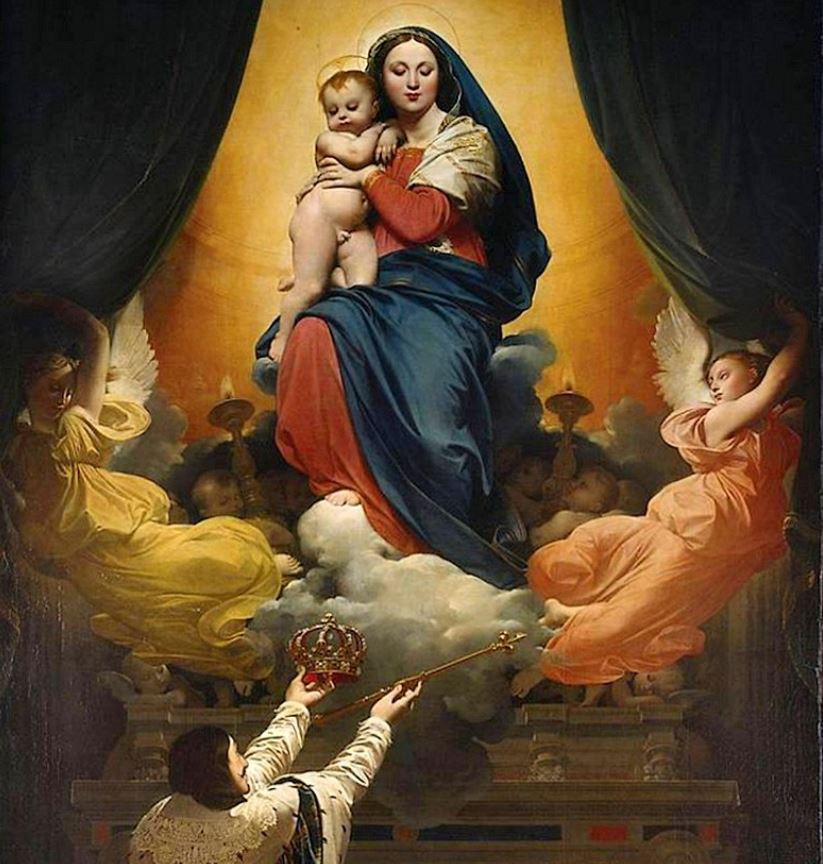One of the bloodiest episodes of the 19th century was the slaughtering of thousands of people by Ottoman troops on a small Greek island.
This event sparked major outrage all across the world and ended up helping the Greeks during their War of Independence in 1822.
The painting discussed in this article depicts the horrors that took place about 2 centuries ago in a pretty graphic manner.
Let’s take a closer look at some of the most interesting facts about “The Massacre at Chios” by Eugène Delacroix, one of the most prominent French Romantic painters.
1. It was only the second major painting of Delacroix
Eugène Delacroix (1798-1863) is considered to be the leading artist of the French Romantic School. When painted The Massacre at Chios, only one of his paintings had been put on public display yet.
His first main painting, “The Barque of Dante” (1822), was put on display at “The Salon” of 1822 and is considered to be a transition painting between the ideals of the Neoclassical artists and those of the Romantic artists.
The events depicted in his next major work had already unfolded and Delacroix managed to complete the painting in 1824, ready for the Salon of that year.
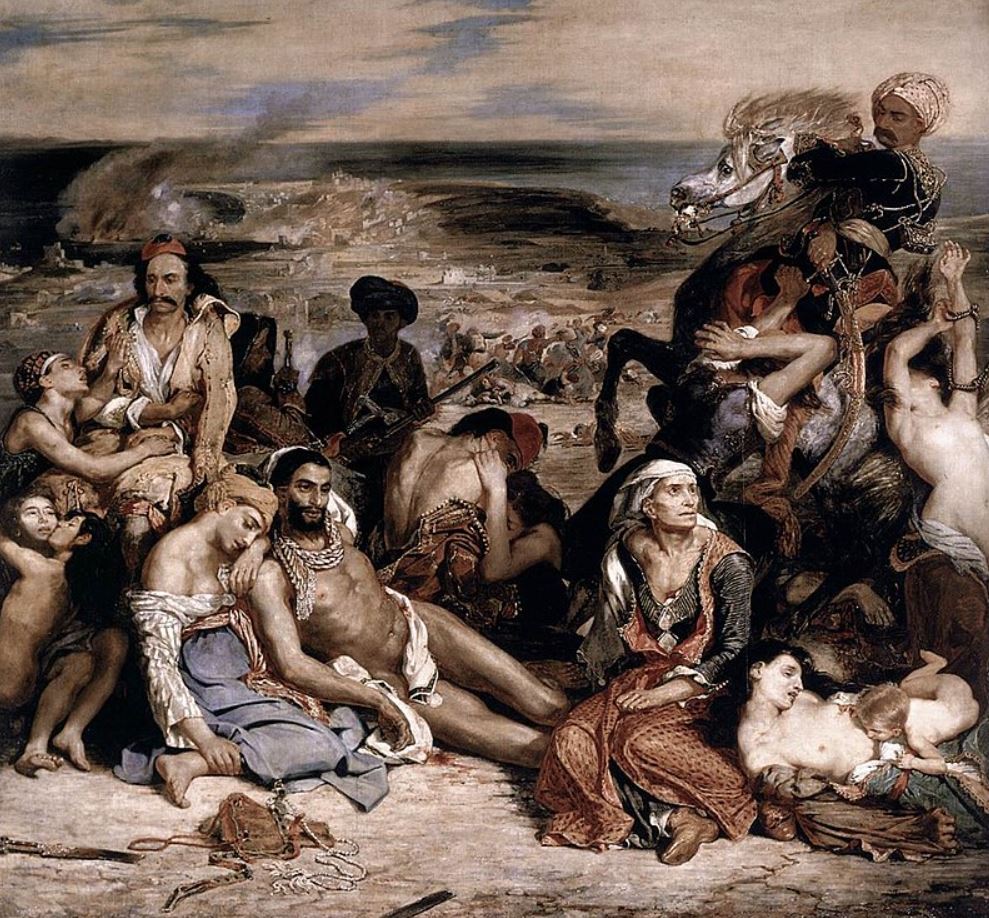
2. It depicts a bloody episode during the Greek War of Independence
While the artist’s first major painting depicted a fictional event from Italian Poet Dante’s work “Inferno,” the second one depicted an event that had just taken place.
The campaign of the forces of the Ottoman Empire on the Greek Island of Chios had started on April 11, 1822, and lasted for several months. The result was an incredible tragedy.
It’s estimated that anywhere between 42,000 and 52,000 people living on the island were massacred, and an equal amount ended up being enslaved. This is remarkable because the population of Chios was only approximately 120,000 at the time.
Delacroix didn’t hold back to depict the horrors that took place on the island as men, women, and children, are seen being prepared to either be massacred or enslaved.
3. Delacroix was inspired by a painting for which he once modeled
Delacroix was an enormous fan of one of his colleagues named Théodore Géricault (1791-1824). If the man hadn’t passed away so young he would have probably been considered the leading Romantic artist at the time.
This pioneer of the Romantic movement in France painted “The Raft of the Medusa” between 1818 and 1819, and Delacroix, who was a friend of Géricault, stood model as one of the figures in the foreground.
This painting served as a major source of inspiration for The Massacre at Chios.
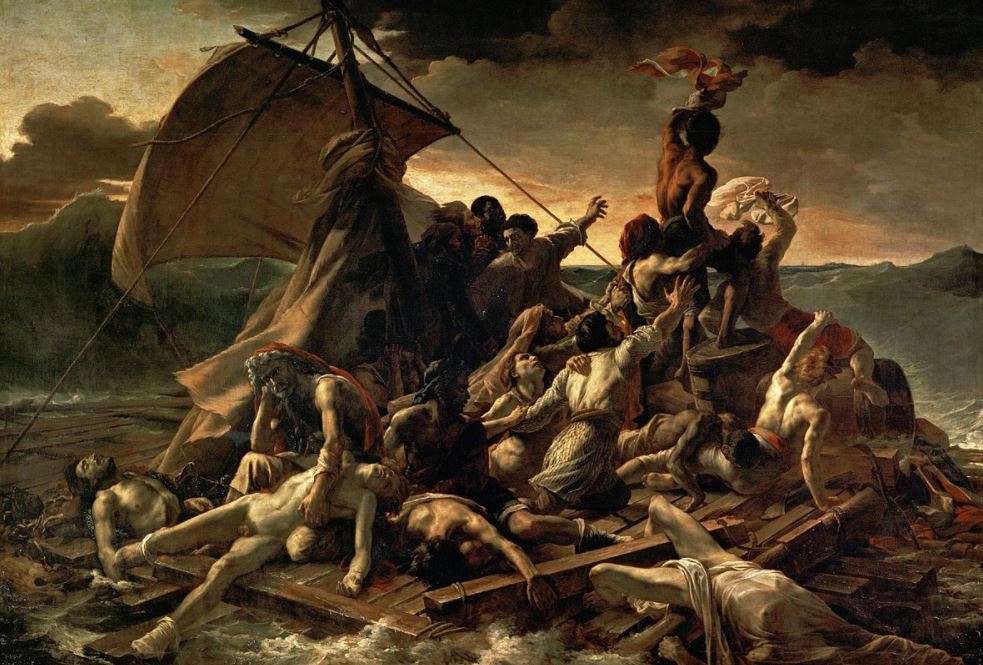
4. Two human pyramids dominate the composition of the painting
Apart from the human tragedy that can be seen in both paintings, the main inspiration for Delacroix was in the composition of The Raft of the Medusa. The people are arranged in a pyramidal shape which was quite unusual at the time.
The artist took it a step further as he created two sets of human pyramids. The one on the left runs up to the man with the red hat, while the one on the right culminates in the Ottoman soldier on his horse.
5. The painting wasn’t originally on display at the Louvre Museum
Delacroix started painting the atrocities of the slaughtering on the Greek Island of Chios in May 1823 and managed to complete the work in time for the Salon of 1824 which started on August 25 of that year.
As expected, the painting evoked a wide variety of sentiments from critics. Fellow artist Antoine-Jean Gros referred to it as “The Massacre of Painting,” while one of his main rivals Ingres referred to it as a prime example of the “fever and epilepsy of modern art.”
Regardless of these initial comments, the state of France ended up buying the painting for 6,000 francs and it initially hung at the Musée du Luxembourg in Paris.
It wasn’t until November 1874 that it was transferred to the location it can still be admired today, the most famous museum in the world, the Louvre.
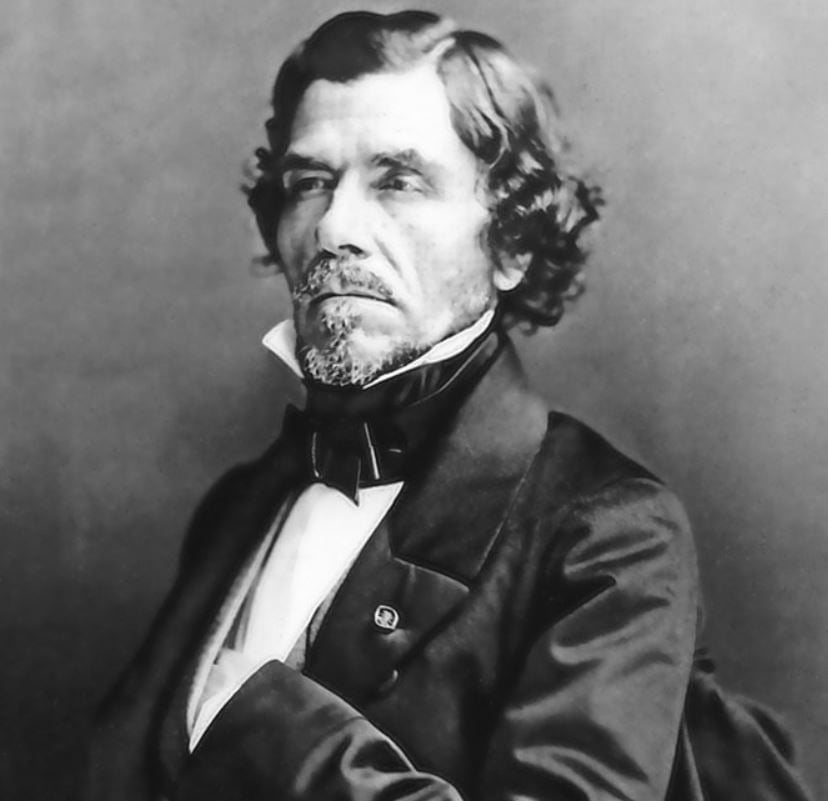
More interesting facts about The Massacre at Chios by Delacroix
6. The painting was created at a monumental scale, just like most other works by Delacroix. It stands over 4 meters tall as it has dimensions of 419 × 354 centimeters (164 × 139 inches).
7. The contrast between the dense human pyramids in the foreground and the vast open and desolate space in the background is quite intriguing.
The scorched earth, smoke, and bland colors of the otherwise amazing Mediterranean strengthen the feeling of hopelessness, something that can be seen in the faces of the group of people as well.
Even though we can see another human tragedy taking place in the background, the overall sense of perspective is completely lost in this space, and even the way Delacroix depicted clouds is completely out of place.
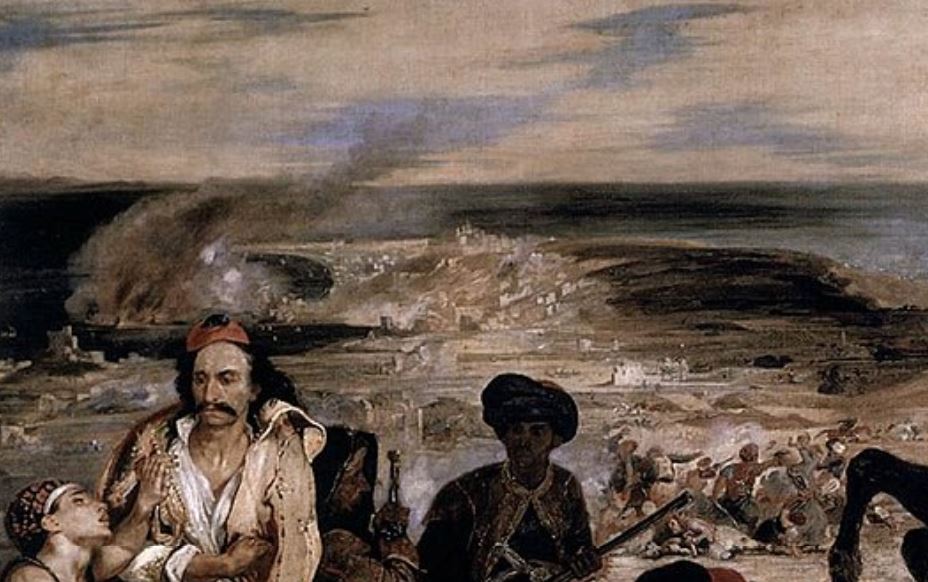
8. What’s remarkable about this painting is that Delacroix already mentioned to a friend on September 15, 1821, that he wanted to create a painting depicting the war between the Greeks and the Ottoman Empire.
The moment that his first painting, The Barque of Dante, was put on public display at the Salon of 1822, the horrible events in Chios took place.
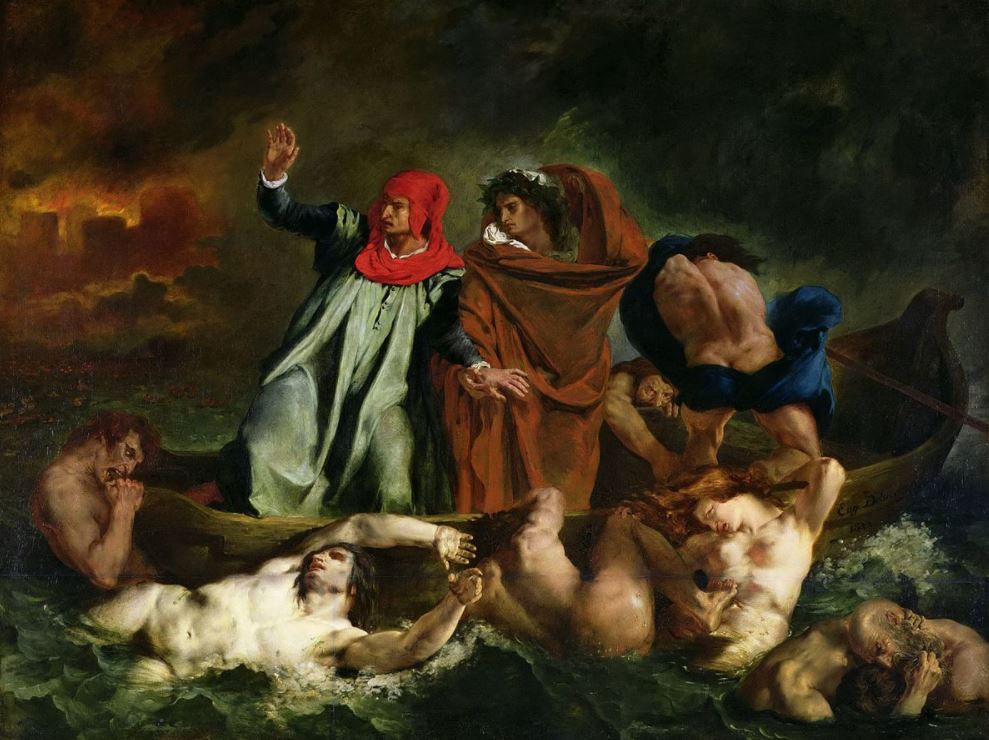
9. A remarkable element that was left out of the painting was a hero to counterbalance the destruction. This was quite unusual at the time and a sheer contrast to what would become Delacroix’s most famous painting, Liberty Leading the People (1830).
10. Delacroix made extensive studies for the figures in the painting. Tow of these studies includes “Head of a Woman” and “Girl Seated in a Cemetery.”
What’s astonishing is that the Orphan Girl at the Cemetery is now considered to be one of the artist’s most famous masterpieces and a prime example of works of the early Romantic period in France.
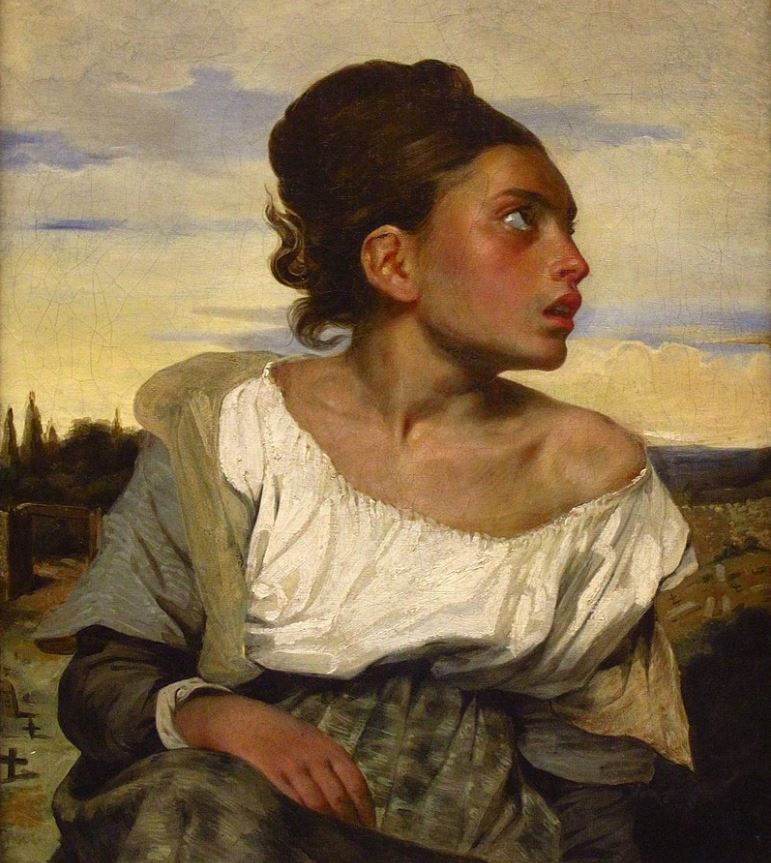
11. The Massacre at Chios was exhibit no. 450 at the 1824 Salon and was titled “Scènes des massacres de Scio; familles grecques attendent la mort ou l’esclavage, etc.” This translates to “Scenes of massacres at Chios; Greek families awaiting death or slavery, etc.”
12. The painting was hung in the same room as “The Vow of Louis XIII,” a painting by Jean-Auguste-Dominique Ingres which depicts the king giving a vow to the Virgin Mary.
The style between the two paintings couldn’t be more contrasting and resembles “The Sistine Madonna” (1513) by Renaissance artist Raphael. This kind of marked the start of the lifelong rivalry between the two famous French artists.
